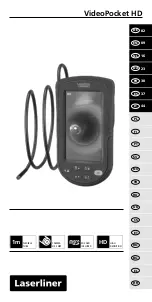
ENGLISH
4
3.0 INTRODUCTION
Jaundice is a condition characterized by yellowing of the skin and eyes that is caused by an excess of bilirubin in the
blood. Bilirubin is a normal waste product resulting from the breakdown of red blood cells and is removed from the
body by the liver. Prior to birth, bilirubin in an infant is processed by the mother’s liver and excreted. After birth, an
infant must eliminate bilirubin without the mother’s help. It may take the infant’s system several days to begin
eliminating bilirubin from the blood faster than it is produced. Infants who are born prematurely, who are underfed, or
who belong to certain ethnic groups are at increased risk of developing jaundice. The initial screening of jaundice is
the observation of yellow skin. This is a subjective determination prone to errors due to differing skin colors and
gestational ages. Bilirubin levels normally peak in full-term infants 4 to 5 days after birth and may peak later in
premature infants. If the infant’s serum bilirubin levels continue to rise the infant is at risk for kernicterus (the deposit
of bilirubin in the brain at toxic levels which can cause permanent neurologic impairment).
4.0 PURPOSE OF THE DEVICE
The Bili
Chek®
Non-Invasive Bilirubin Analyzer is a non-invasive transcutaneous bilirubinometer, which predicts total
serum bilirubin levels before, during, and post phototherapy in neonates without regard to gender, gestational age, race,
or bodyweight. Neonates whose Bili
Chek
test results are indicative of hyperbilirubinemia must be evaluated by their
physician(s) for appropriate patient management. The Bili
Chek
provides a numerical measurement of predicted
bilirubin count in mg/dL or µmol/L within a clinically beneficial range that has been correlated with total serum
bilirubin concentration measured by High Pressure Liquid Chromotography (HPLC). The device is used by Health
Care Professionals to assist clinicians in monitoring the status of neonates for the development of hyperbilirubinemia.
5.0 THEORY OF OPERATION
The Bili
Chek
works by directing white light into the skin of the newborn and measuring the intensity of the specific
wavelengths that are returned. By knowing the spectral properties of the components within the skin, one can subtract
out the interfering components and determine the concentration of bilirubin.
Each photon has a characteristic wavelength. As light enters skin tissue it can collide with the structural components
such as collagen fibers. When a collision occurs, the photon loses energy and the direction of travel is changed. This
is called a scattering event. If enough of these scattering events occur, the photon completely loses its energy and is
absorbed. If a photon is scattered such that it is re-emitted from the skin, it is reflected.
Photons with longer wavelengths (in the red region of the spectrum) are scattered less than photons with shorter
wavelengths (in the blue region of the spectrum). This phenomenon is called wavelength-dependent scattering and
explains why the skin appears red when you shine a bright light through it. It is also one of the reasons why the
optical properties of the newborn’s skin changes with advancing gestational and post-natal age. As the skin matures,
it becomes thicker and there is greater keratinization of the cell membranes which increases the scattering of
incident light.
Photons of specific wavelengths are also preferentially absorbed by certain molecules. By plotting the absorption
against the wavelength one can visualize characteristic absorption spectra of the particular molecules. For example,
melanin has a near-linear absorption spectrum in the visible spectrum and, like the scattering phenomenon, there is
greater absorption of photons with shorter wavelengths than in the red region of the spectrum. Conversely,
hemoglobin is a much more complicated absorber which is compounded by the fact that oxyhemoglobin and
deoxyhemoglobin have different profiles. The peak absorption of photons by bilirubin occurs at a wavelength of
460nm. This is in the blue portion of the spectrum and is the reason why blue lights are sometimes preferred for
phototherapy. It is also in a region of the spectrum at which hemoglobin absorption is relatively low.
Содержание bilichek
Страница 2: ...ENGLISH ...







































